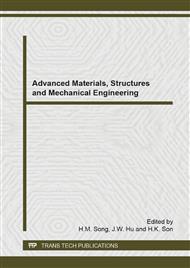p.891
p.897
p.902
p.906
p.910
p.914
p.918
p.922
p.926
Simulation of Interference Characteristics of the Model Supporting Beams with Different Forms of Section in Wind Tunnel Test
Abstract:
In order to study the effects of the supporting beams with different forms of section on the aerodynamic characteristics of car models. Model supporting beams with three different forms of section were designed based on standard MIRA model. The commercial CFD software - Ansys Fluent was used to simulate the three-dimensional flow field around the standard MIRA model installed with three different kinds of supporting beams. With comparisons between the drag coefficients, pressure distributions and velocity distributions around the wheels with the different supporting beams, the reasons for the differences in aerodynamics are analyzed and advices were given for helping choosing the supporting beam with minimal disturbance to reduce the correction error.
Info:
Periodical:
Pages:
910-913
Citation:
Online since:
September 2014
Authors:
Price:
Сopyright:
© 2014 Trans Tech Publications Ltd. All Rights Reserved
Share:
Citation:


